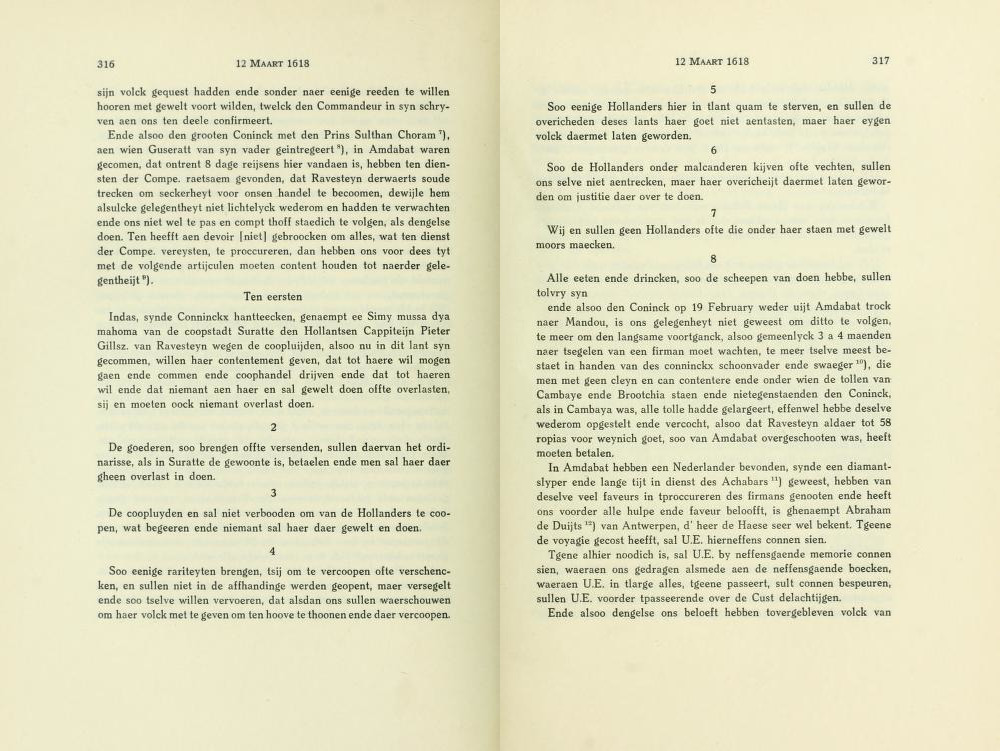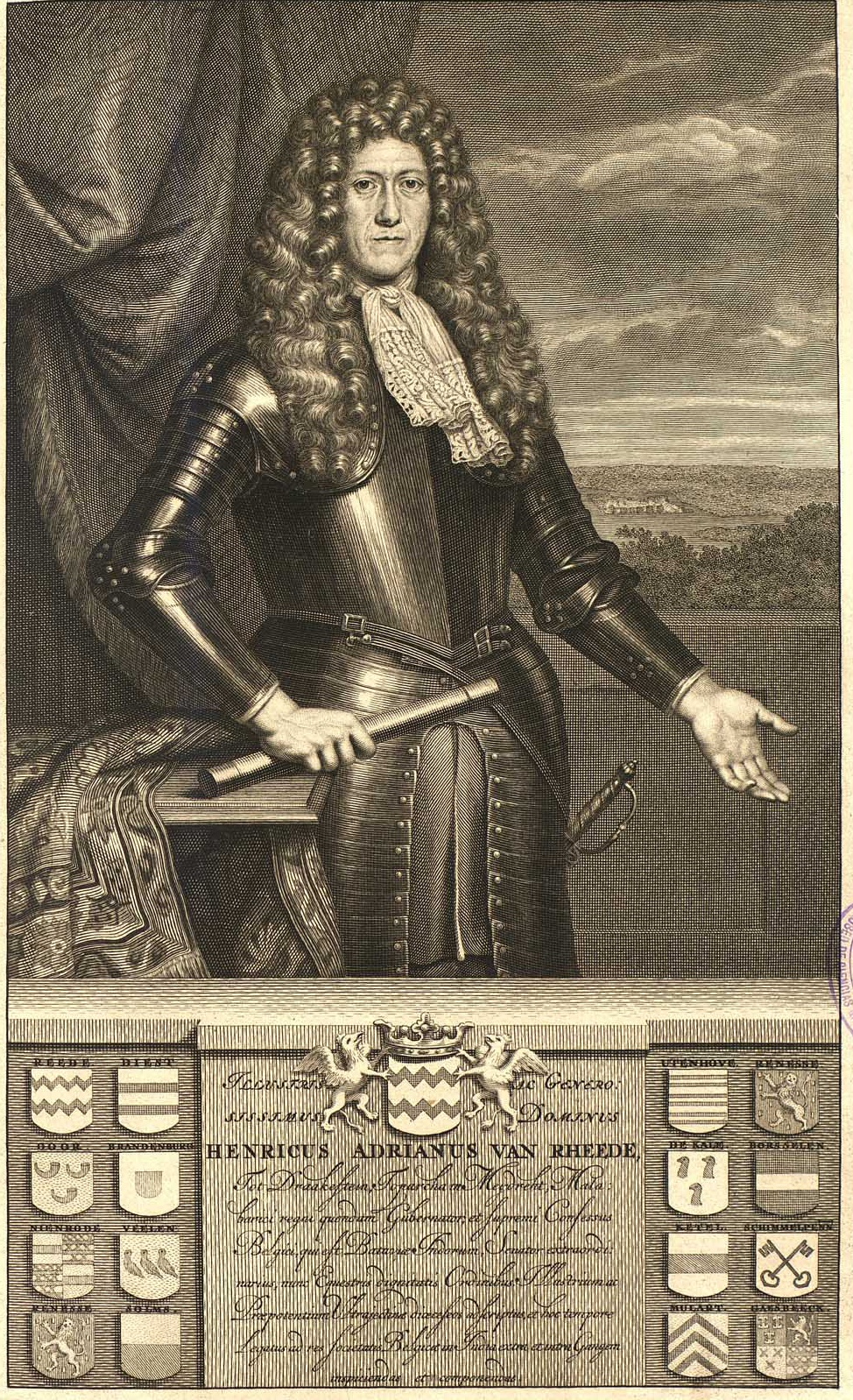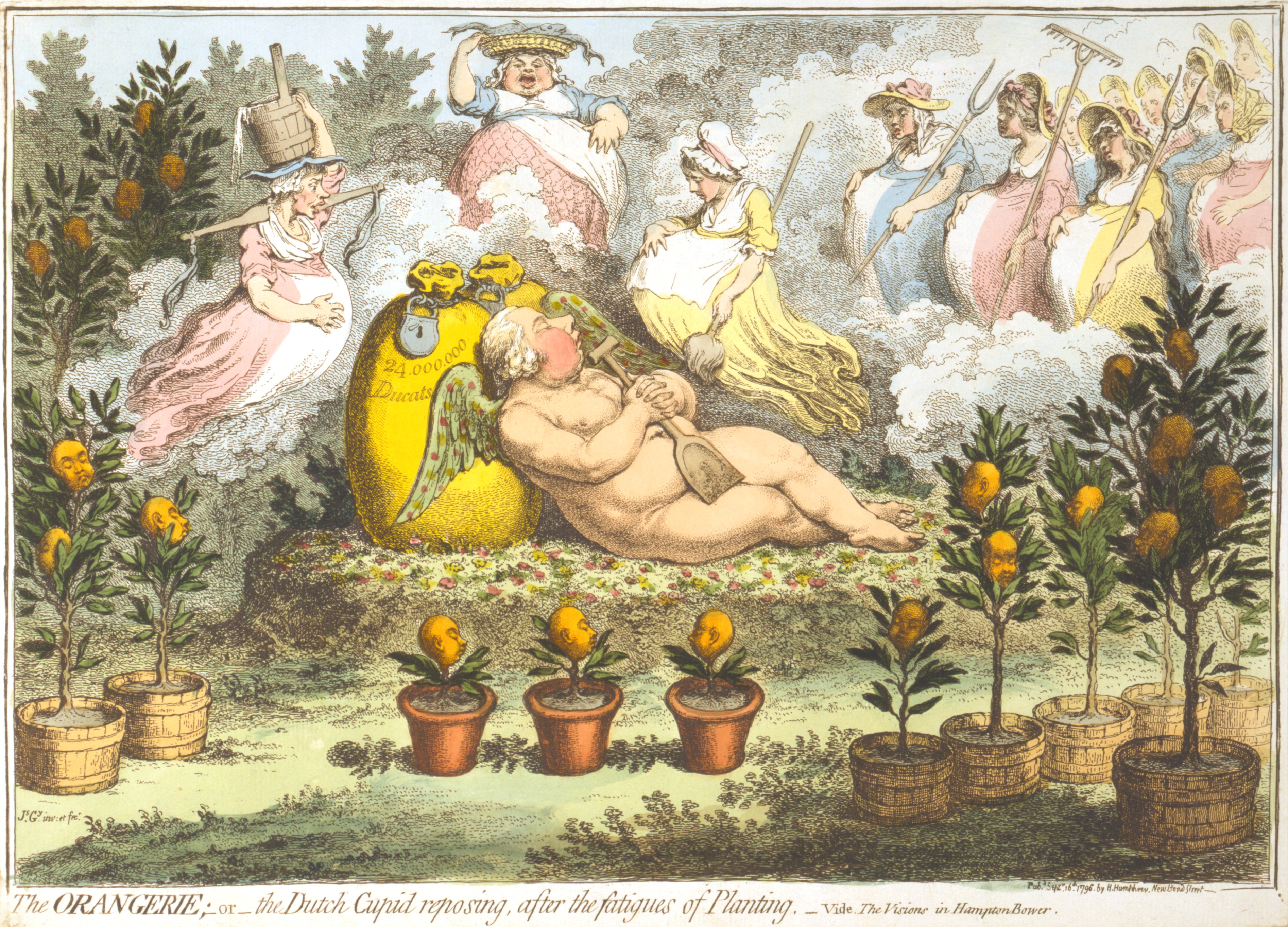|
Suratte
Suratte or Soeratte was a directorate of the Dutch East India Company between 1616 and 1795, with its main factory in the city of Surat. Surat was an important trading city of the Mughal Empire on the river Tapti, and the Portuguese had been trading there since 1540. In the early 17th century, Portuguese traders were displaced by English and Dutch traders. Due to internal unrest in the Mughal Empire, Surat's trade with the Mughal capital of Agra gradually declined in the early 18th century, with most trade shifting to Bombay, the new capital of the English Western Presidency. The city became part of British India as a consequence of the Third Carnatic War (1756–1763). While traders of the Dutch East India Company continued trading in Surat, they had become subordinate to the English.De VOC site Suratte/ref> The Dutch possessions in Surat were occupied by British forces in 1795 by instruction of Dutch stadtholder William V, who wanted to prevent revolutionary France from taking ... [...More Info...] [...Related Items...] OR: [Wikipedia] [Google] [Baidu] |
Conrad Josef Gustaf Van Albedyll
Conrad Josef Gustaf van Albedyll (5 October 1786 – 5 November 1846) was the last resident of Dutch Suratte between 1818 and 1825. He was an heir of the . Biography Conrad Josef Gustaf van Albedyll was born in Colombo, Dutch Ceylon, to Carl Ludwig Maximilian van Albedyll and Maria Amalia de Crouse. His father was a Swedish nobleman originally from Stralsund, who had served as an officer in the Prussian army and had later made a career as a merchant in the service of the Dutch East India Company on Ceylon. His mother was the daughter of the Dutch resident of Kochi. By 1796, Dutch Ceylon and the Dutch possessions on the Indian subcontinent had fallen in the hands of the English due to the provisions of the Kew Letters issued by Dutch stadtholder William V, who wanted to prevent revolutionary France from taking possession of the Dutch holdings in Asia. The Treaty of Amiens of 1802 was supposed to restore all Dutch possessions with the exception of Ceylon to Dutch rule, leadi ... [...More Info...] [...Related Items...] OR: [Wikipedia] [Google] [Baidu] |
Dutch East India Company
The United East India Company ( nl, Verenigde Oostindische Compagnie, the VOC) was a chartered company established on the 20th March 1602 by the States General of the Netherlands amalgamating existing companies into the first joint-stock company in the world, granting it a 21-year monopoly to carry out trade activities in Asia. Shares in the company could be bought by any resident of the United Provinces and then subsequently bought and sold in open-air secondary markets (one of which became the Amsterdam Stock Exchange). It is sometimes considered to have been the first multinational corporation. It was a powerful company, possessing quasi-governmental powers, including the ability to wage war, imprison and execute convicts, negotiate treaties, strike its own coins, and establish colonies. They are also known for their international slave trade. Statistically, the VOC eclipsed all of its rivals in the Asia trade. Between 1602 and 1796 the VOC sent almost a million Eur ... [...More Info...] [...Related Items...] OR: [Wikipedia] [Google] [Baidu] |
Pieter Van Den Broecke
Pieter van den Broecke (25 February 1585, Antwerp – 1 December 1640, Strait of Malacca) was a Dutch cloth merchant in the service of the Dutch East India Company (VOC), and one of the first Dutchmen to taste coffee. He also went to Angola three times. He was one of the first Europeans to describe societies in West and Central Africa and in detail trade strategies along the African coast. Life His parents, Pieter van den Broecke Sr and Maiken de Morimont, lived in Antwerp. However, after the Fall of Antwerp to the Spanish, which happened at the year of his birth, Antwerp's Protestant population was given the choice of converting to the Roman Catholic Church or departing the city, though Protestants were given four years to settle their affairs before leaving. Van den Broecke's Calvinist parents were among the many who chose to depart, arriving first at Alkmaar in the new Dutch Republic. The family lived in Hamburg for a while and left around 1597 for Amsterdam. At the time the V ... [...More Info...] [...Related Items...] OR: [Wikipedia] [Google] [Baidu] |
Hendrik Van Rheede
Hendrik Adriaan van Rheede tot Drakenstein (Amsterdam, 13 April 1636 – at sea, 15 December 1691) was a military man and a colonial administrator of the Dutch East India Company and naturalist. Between 1669 and 1676 he served as a governor of Dutch Malabar and employed twenty-five people on his book ''Hortus Malabaricus'', describing 740 plants in the region. As Lord of Mydrecht, he also played a role in the governance of the Cape colonies. Many plants such as the vine ''Entada rheedii'' are named for him. Biography Van Rheede was born into a family of noblemen that played a leading role in the political, administrative and cultural life of the province of Utrecht. His mother, Elisabeth van Utenhove, died in 1637 while his father, Ernst van Rheede, Council at the Admiralty of Amsterdam, died when he was four. Hendrik Adriaan, the youngest of seven children, left home at the age of fourteen. In 1656 he joined as a soldier in the Dutch East India Company (V.O.C., Vereenigde Oos ... [...More Info...] [...Related Items...] OR: [Wikipedia] [Google] [Baidu] |
Dutch Malabar
Dutch Malabar (Dutch; ''Nederlandse Malabar''. Malayalam; ''ഡച്ച് മലബാർ''.) also known by the name of its main settlement Cochin, was the title of a commandment of the Dutch East India Company on the Malabar Coast between 1661 and 1795, and was a subdivision of what was collectively referred to as Dutch India. Dutch presence in the Malabar region started with the capture of Portuguese Quilon, and ended with the conquest of Malabar by the British in 1795.De VOC site Malabar/ref> They possessed military outposts in 11 locations: Alleppey, Ayacotta, Chendamangalam, Pappinivattom, Ponnani, Pallipuram, Cranganore (from 15January 1662), Chetwai, Cannanore (from 15February 1663), Cochin (7January 16631795), and Quilon (29December 165814 April 1659 and from 24December 1661 – 1795). The Kingdom of Cochin was an ally of the Dutch East India Company. The Dutch enlarged the Royal Palace built by the Portuguese at Mattancheri for the King of Cochin, which from th ... [...More Info...] [...Related Items...] OR: [Wikipedia] [Google] [Baidu] |
Treaty Of Amiens
The Treaty of Amiens (french: la paix d'Amiens, ) temporarily ended hostilities between France and the United Kingdom at the end of the War of the Second Coalition The War of the Second Coalition (1798/9 – 1801/2, depending on periodisation) was the second war on revolutionary France by most of the European monarchies, led by Britain, Austria and Russia, and including the Ottoman Empire, Portugal, N .... It marked the end of the French Revolutionary Wars; after a short peace it set the stage for the Napoleonic Wars. Britain gave up most of its recent conquests; France was to evacuate Kingdom of Naples, Naples and Egypt Eyalet, Egypt. Britain retained British Ceylon, Ceylon (Sri Lanka) and Trinidad. It was signed in the city of Amiens on 25 March 1802 (4 Germinal X in the French Revolutionary calendar) by Joseph Bonaparte and Marquess Charles Cornwallis, 1st Marquess Cornwallis, Cornwallis as a "Definitive Treaty of Peace". The consequent peace lasted only one year ( ... [...More Info...] [...Related Items...] OR: [Wikipedia] [Google] [Baidu] |
Sultanate Of Aceh
The Sultanate of Aceh, officially the Kingdom of Aceh Darussalam ( ace, Keurajeuën Acèh Darussalam; Jawoë: كاورجاون اچيه دارالسلام), was a sultanate centered in the modern-day Indonesian province of Aceh. It was a major regional power in the 16th and 17th centuries, before experiencing a long period of decline. Its capital was Kutaraja, the present-day Banda Aceh. At its peak it was a formidable enemy of the Sultanate of Johor and Portuguese-controlled Malacca, both on the Malayan Peninsula, as all three attempted to control the trade through the Strait of Malacca and the regional exports of pepper and tin with fluctuating success. In addition to its considerable military strength, the court of Aceh became a noted center of Islamic scholarship and trade. History Foundation and rise The sultanate was founded by Ali Mughayat Syah, who began campaigns to extend his control over northern Sumatra in 1520. His conquests included Deli, Pedir, and Pasai, ... [...More Info...] [...Related Items...] OR: [Wikipedia] [Google] [Baidu] |
French India
French India, formally the ( en, French Settlements in India), was a French colony comprising five geographically separated enclaves on the Indian Subcontinent that had initially been factories of the French East India Company. They were ''de facto'' incorporated into the Republic of India in 1950 and 1954. The enclaves were , Karikal, Yanaon (Andhra Pradesh) on the Coromandel Coast, Mahé on the Malabar Coast and Chandernagor in Bengal. The French also possessed several ('lodges', tiny subsidiary trading stations) inside other towns, but after 1816, the British denied all French claims to these, which were not reoccupied. By 1950, the total area measured , of which belonged to the territory of . In 1936, the population of the colony totalled 298,851 inhabitants, of which 63% (187,870) lived in the territory of Pondichéry. Context France was the last of the major European maritime powers of the 17th century to enter the East India trade. Six decades after the ... [...More Info...] [...Related Items...] OR: [Wikipedia] [Google] [Baidu] |
Kochi
Kochi (), also known as Cochin ( ) ( the official name until 1996) is a major port city on the Malabar Coast of India bordering the Laccadive Sea, which is a part of the Arabian Sea. It is part of the district of Ernakulam in the state of Kerala and is commonly referred to as Ernakulam. Kochi is the most densely populated city in Kerala. As of 2011, it has a corporation limit population of 677,381 within an area of 94.88 km2 and a total urban population of more than of 2.1 million within an area of 440 km2, making it the largest and the most populous metropolitan area in Kerala. Kochi city is also part of the Greater Cochin region and is classified as a Tier-II city by the Government of India. The civic body that governs the city is the Kochi Municipal Corporation, which was constituted in the year 1967, and the statutory bodies that oversee its development are the Greater Cochin Development Authority (GCDA) and the Goshree Islands Development Authority (GIDA). ... [...More Info...] [...Related Items...] OR: [Wikipedia] [Google] [Baidu] |
Anglo-Dutch Treaty Of 1824
The Anglo-Dutch Treaty of 1824, also known as the Treaty of London, was a treaty signed between the United Kingdom and the Netherlands in London on 17 March 1824. The treaty was to resolve disputes arising from the execution of the Anglo-Dutch Treaty of 1814. For the Dutch, it was signed by Hendrik Fagel and Anton Reinhard Falck, and for the British, George Canning and Charles Williams-Wynn.H.R.C. Wright, "The Anglo-Dutch Dispute in the East, 1814-1824." ''Economic History Review'' 3.2 (1950): 229-23online History The Anglo-Dutch Treaty of 1824, designed to solve many of the issues that had arisen by the British occupation of Dutch colonial possessions during the Napoleonic Wars as well as those regarding the rights to trade that existed for hundreds of years in the Spice Islands between the two nations, was a treaty that addressed a wide array of issues and did not clearly describe the limitations of expansion by either side in the Malay world. The British establishmen ... [...More Info...] [...Related Items...] OR: [Wikipedia] [Google] [Baidu] |
Carl Ludwig Maximilian Van Albedyll
Carl may refer to: *Carl, Georgia, city in USA *Carl, West Virginia, an unincorporated community *Carl (name), includes info about the name, variations of the name, and a list of people with the name *Carl², a TV series * "Carl", an episode of television series ''Aqua Teen Hunger Force'' * An informal nickname for a student or alum of Carleton College CARL may refer to: *Canadian Association of Research Libraries *Colorado Alliance of Research Libraries See also *Carle (other) *Charles *Carle, a surname *Karl (other) *Karle (other) Karle may refer to: Places * Karle (Svitavy District), a municipality and village in the Czech Republic * Karli, India, a town in Maharashtra, India ** Karla Caves, a complex of Buddhist cave shrines * Karle, Belgaum, a settlement in Belgaum d ... {{disambig ja:カール zh:卡尔 ... [...More Info...] [...Related Items...] OR: [Wikipedia] [Google] [Baidu] |
William V, Prince Of Orange
William V (Willem Batavus; 8 March 1748 – 9 April 1806) was a prince of Orange and the last stadtholder of the Dutch Republic. He went into exile to London in 1795. He was furthermore ruler of the Principality of Orange-Nassau until his death in 1806. In that capacity he was succeeded by his son William. Early life William Batavus was born in The Hague on 8 March 1748, the only son of William IV, who had the year before been restored as stadtholder of the United Provinces. He was only three years old when his father died in 1751, and a long regency began. His regents were: * Dowager Princess Anne, his mother, from 1751 to her death in 1759; * Dowager Princess Marie Louise, his grandmother, from 1759 to her death in 1765; *Duke Louis Ernest of Brunswick-Lüneburg, from 1759 to 1766, and kept on as a privy counsellor, in accordance with the ''Acte van Consulentschap'', until October 1784; * Princess Carolina, his sister (who at the time was an adult aged 22, while he was still a ... [...More Info...] [...Related Items...] OR: [Wikipedia] [Google] [Baidu] |

%2C_Hoorn.jpg)
.jpg)





.jpg)

